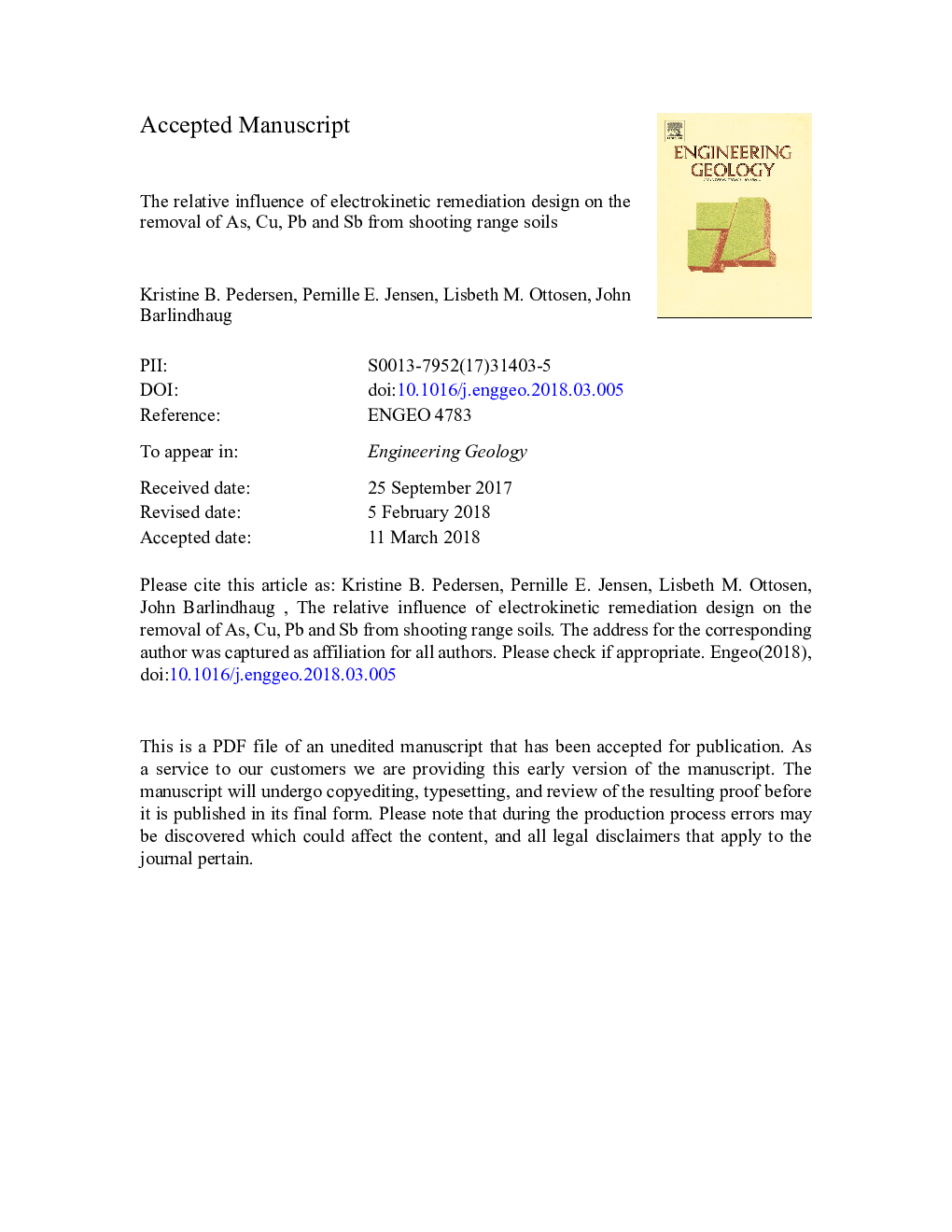| Article ID | Journal | Published Year | Pages | File Type |
|---|---|---|---|---|
| 8915904 | Engineering Geology | 2018 | 27 Pages |
Abstract
Electrodialytic remediation was applied for remediation of shooting range soils from two sites in Norway for which the targeted metals were As, Cu, Pb and Sb. Up to 75% Cu and 78% Pb was removed in the treatment, while low removal of As (<3%) and Sb (14%) was observed suggesting low mobility and bioavailability of these two metals in the studied soils. Removal of metals from the natural soil matrix (Al, Fe, K, Mg and Mn) were with the exception of Mn generally low (<20%) making it possible to target the removal of Cu and Pb while limiting the disturbance to the natural soil matrix. Multivariate design and analysis was applied for assessing the efficiency of electrodialytic remediation treatment and variable importance varied for each of the studied metals. In general, applying a stirred set-up improved the metal removal, acidification time and reduced the energy consumption. The placement of the anode directly in the soil did not significantly influence the removal of Al, Mg, Mn, As and Pb, while moderately influencing the removal of Cu. Multivariate analysis (projections onto latent structures) revealed similar variable importance and optimal settings for removal of Cu and Pb. It is hence possible to simultaneously optimise the removal by applying a stirred set-up, placement of the anode directly in the soil suspension, sieving the soil (<2â¯mm fraction) and long treatment time (35â¯days). The study showed that multivariate analysis is a valuable tool for evaluating remediation measures depending soil characteristics and this way be used for selection of site-specific best available remediation methods.
Related Topics
Physical Sciences and Engineering
Earth and Planetary Sciences
Geotechnical Engineering and Engineering Geology
Authors
Kristine B. Pedersen, Pernille E. Jensen, Lisbeth M. Ottosen, John Barlindhaug,
